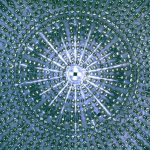In a first, neutrinos were caught interacting at the Large Hadron Collider0
- From Around the Web, Science & Technology
- May 26, 2021
A proof-of-concept experiment paves the way for a larger detector in 2022

A proof-of-concept experiment paves the way for a larger detector in 2022

The elusive particles would be hard to catch, but they’d be a smoking gun, researchers say

The Borexino experiment detected particles from our star’s second-most important fusion process

If true, this would be only the second time such a neutrino has been traced back to its source

Scientists have made a major breakthrough that could help us understand the origin of our universe, they say.

One of the great scientific puzzles of our time is why we live in a universe full of matter rather than antimatter. Wherever we look, we observe that matter dominates over antimatter, yet we believe that matter and antimatter were created in equal amounts soon after the Big Bang. To reconcile these two facts there must be some difference in the way matter and antimatter behave.

An underground particle detector called the Borexino detector has detected 53 antielectron neutrinos emanating from the Earth, so-called geoneutrinos.

When physicists detected signals of high-energy neutrinos coming from a rather unlikely direction in the cosmos, they naturally went looking for a powerful source that might explain it.

The tiny particles provide an independent test of some of the planet’s key properties

Anomalous experimental results hint at the possibility of a fourth kind of neutrino, but more data only makes the situation more confusing. Katie Mack explains.



